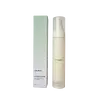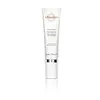Alluskin Barrier Cream Versus AlumierMD Hydra Calm
What's inside
What's inside
 Key Ingredients
Key Ingredients

 Benefits
Benefits

 Concerns
Concerns

 Ingredients Side-by-side
Ingredients Side-by-side

Water
Skin ConditioningPropylene Glycol
HumectantCaprylic/Capric Triglyceride
MaskingOlea Europaea Oil Unsaponifiables
Skin ConditioningGlycerin
HumectantSimmondsia Chinensis Seed Oil
EmollientNiacinamide
SmoothingHydrogenated Phosphatidylcholine
EmulsifyingSodium Hyaluronate
HumectantTocopheryl Acetate
AntioxidantCeramide NP
Skin ConditioningButyrospermum Parkii Butter
Skin ConditioningAloe Barbadensis Leaf Juice
Skin ConditioningHamamelis Virginiana Extract
AntiseborrhoeicDipotassium Glycyrrhizate
HumectantMaltodextrin
AbsorbentPhytosterols
Skin ConditioningXanthan Gum
EmulsifyingCarbomer
Emulsion StabilisingEthylhexylglycerin
Skin ConditioningGlyceryl Caprylate
EmollientDipropylene Glycol
HumectantHydroxyacetophenone
AntioxidantCaprylyl Glycol
EmollientTriethanolamine
BufferingPhenoxyethanol
PreservativeWater, Propylene Glycol, Caprylic/Capric Triglyceride, Olea Europaea Oil Unsaponifiables, Glycerin, Simmondsia Chinensis Seed Oil, Niacinamide, Hydrogenated Phosphatidylcholine, Sodium Hyaluronate, Tocopheryl Acetate, Ceramide NP, Butyrospermum Parkii Butter, Aloe Barbadensis Leaf Juice, Hamamelis Virginiana Extract, Dipotassium Glycyrrhizate, Maltodextrin, Phytosterols, Xanthan Gum, Carbomer, Ethylhexylglycerin, Glyceryl Caprylate, Dipropylene Glycol, Hydroxyacetophenone, Caprylyl Glycol, Triethanolamine, Phenoxyethanol
Water
Skin ConditioningPropanediol
SolventCaprylic/Capric Triglyceride
MaskingGlycerin
HumectantShea Butter Cetyl Esters
Skin ConditioningShorea Stenoptera Seed Butter
EmollientSea Water
HumectantC12-16 Alcohols
EmollientBehenyl Alcohol
EmollientAmmonium Acryloyldimethyltaurate/Vp Copolymer
Carthamus Tinctorius Seed Oil
MaskingCetyl Palmitate
EmollientNiacinamide
SmoothingAloe Barbadensis Leaf Juice
Skin ConditioningPoria Cocos Extract
Skin ConditioningTetrapeptide-14
Skin ConditioningCopper Tripeptide-1
Skin ConditioningHinokitiol
Crambe Abyssinica Seed Oil
Skin ConditioningDipotassium Glycyrrhizate
HumectantHydrolyzed Hyaluronic Acid
HumectantOlea Europaea Oil Unsaponifiables
Skin ConditioningBoswellia Serrata Gum Extract
Skin ConditioningHoney Extract
HumectantCamellia Sinensis Leaf Extract
AntimicrobialAspalathus Linearis Leaf Extract
Skin ConditioningHydrogenated Lecithin
EmulsifyingTocopheryl Acetate
AntioxidantPinus Cembra Wood Extract
Skin ConditioningPorphyridium Cruentum Extract
Skin ConditioningPalmitic Acid
EmollientGlyceryl Caprylate
EmollientXanthan Gum
EmulsifyingDimethicone
EmollientMaltodextrin
AbsorbentHydroxyacetophenone
AntioxidantDisodium EDTA
Caprylhydroxamic Acid
Sodium Hydroxide
BufferingCitric Acid
Buffering1,2-Hexanediol
Skin ConditioningCaprylyl Glycol
EmollientEthylhexylglycerin
Skin ConditioningWater, Propanediol, Caprylic/Capric Triglyceride, Glycerin, Shea Butter Cetyl Esters, Shorea Stenoptera Seed Butter, Sea Water, C12-16 Alcohols, Behenyl Alcohol, Ammonium Acryloyldimethyltaurate/Vp Copolymer, Carthamus Tinctorius Seed Oil, Cetyl Palmitate, Niacinamide, Aloe Barbadensis Leaf Juice, Poria Cocos Extract, Tetrapeptide-14, Copper Tripeptide-1, Hinokitiol, Crambe Abyssinica Seed Oil, Dipotassium Glycyrrhizate, Hydrolyzed Hyaluronic Acid, Olea Europaea Oil Unsaponifiables, Boswellia Serrata Gum Extract, Honey Extract, Camellia Sinensis Leaf Extract, Aspalathus Linearis Leaf Extract, Hydrogenated Lecithin, Tocopheryl Acetate, Pinus Cembra Wood Extract, Porphyridium Cruentum Extract, Palmitic Acid, Glyceryl Caprylate, Xanthan Gum, Dimethicone, Maltodextrin, Hydroxyacetophenone, Disodium EDTA, Caprylhydroxamic Acid, Sodium Hydroxide, Citric Acid, 1,2-Hexanediol, Caprylyl Glycol, Ethylhexylglycerin
Ingredients Explained
These ingredients are found in both products.
Ingredients higher up in an ingredient list are typically present in a larger amount.
Aloe Barbadensis Leaf Juice comes from leaves of the aloe plant. Aloe Barbadensis Leaf Juice is best known for helping to soothe sunburns. It is also anti-inflammatory, moisturizing, antiseptic, and can help heal wounds.
Aloe is packed with good stuff including Vitamins A, C, and E. These vitamins are antioxidants, which help fight free-radicals and the damage they may cause. Free-radicals are molecules that may damage your skin cells, such as pollution.
Aloe Barbadensis Leaf Juice also contains sugars. These sugars come in the form of monosaccharides and polysaccharides, folic acid, and choline. These sugars are able to help bind moisture to skin.
It also contains minerals such as calcium, 12 anthraquinones, fatty acids, amino acids, and Vitamin B12.
Learn more about Aloe Barbadensis Leaf JuiceThis ingredient is an emollient, solvent, and texture enhancer. It is considered a skin-softener by helping the skin prevent moisture loss.
It helps thicken a product's formula and makes it easier to spread by dissolving clumping compounds.
Caprylic Triglyceride is made by combining glycerin with coconut oil, forming a clear liquid.
While there is an assumption Caprylic Triglyceride can clog pores due to it being derived from coconut oil, there is no research supporting this.
Learn more about Caprylic/Capric TriglycerideCaprylyl Glycol is a humectant and emollient, meaning it attracts and preserves moisture.
It is a common ingredient in many products, especially those designed to hydrate skin. The primary benefits are retaining moisture, skin softening, and promoting a healthy skin barrier.
Though Caprylyl Glycol is an alcohol derived from fatty acids, it is not the kind that can dry out skin.
This ingredient is also used as a preservative to extend the life of products. It has slight antimicrobial properties.
Learn more about Caprylyl GlycolDipotassium Glycyrrhizate comes from licorice root.
Extracts of licorice have demonstrated to have antibacterial, anti‐inflammatory, antiviral, antioxidant properties.
One component, glabridin, has extra potent antioxidant and soothing properties. It has also been found to block pigmentation from UVB rays in guinea pigs.
Licorice Root also contains a flavonoid. Flavonoids are a natural substance from in plants. Flavonoids also have antioxidant properties.
Another component, glycyrrhizin, has been found to have anti-inflammatory and antimicrobial benefits. This may make licorice root extract effective at treating acne. However, more research is needed to support this.
Liquiritin is one of the flavone compounds found in licorice. It has been found to help lighten skin by preventing tyrosinase from reacting with tyrosine. When the two react, protein is converted to melanin. Melanin is the substance in your body that gives your features pigmentation.
Licorice root is native to Southern Europe and Asia. It has been used in traditional Chinese medicine to help with respiratory issues.
Learn more about Dipotassium GlycyrrhizateEthylhexylglycerin (we can't pronounce this either) is commonly used as a preservative and skin softener. It is derived from glyceryl.
You might see Ethylhexylglycerin often paired with other preservatives such as phenoxyethanol. Ethylhexylglycerin has been found to increase the effectiveness of these other preservatives.
Glycerin is already naturally found in your skin. It helps moisturize and protect your skin.
A study from 2016 found glycerin to be more effective as a humectant than AHAs and hyaluronic acid.
As a humectant, it helps the skin stay hydrated by pulling moisture to your skin. The low molecular weight of glycerin allows it to pull moisture into the deeper layers of your skin.
Hydrated skin improves your skin barrier; Your skin barrier helps protect against irritants and bacteria.
Glycerin has also been found to have antimicrobial and antiviral properties. Due to these properties, glycerin is often used in wound and burn treatments.
In cosmetics, glycerin is usually derived from plants such as soybean or palm. However, it can also be sourced from animals, such as tallow or animal fat.
This ingredient is organic, colorless, odorless, and non-toxic.
Glycerin is the name for this ingredient in American English. British English uses Glycerol/Glycerine.
Learn more about GlycerinGlyceryl Caprylate comes from glycerin and caprylic acid, a fatty acid from coconut. It has emollient and emulsifier properties.
As an emollient, it helps hydrate your skin. Emollients work by creating a barrier on your skin to trap moisture in, helping to keep your skin soft and smooth.
On the other hand, emulsifiers prevent ingredients (such as oil and water) from separating.
Learn more about Glyceryl CaprylateHydroxyacetophenone is antioxidant with skin conditioning and soothing properties. It also boosts the efficiency of preservatives.
This ingredient is not irritating or sensitizing.
Maltodextrin is a polysaccharide. It is derived from starch such as rice, corn, wheat, or potato starch.
In food, Maltodextrin is used to improve the texture and thicken a product. Due to its structure, it can help create a gel texture. As an emulsion stabilizer, it helps keep the ingredients in a product together.
As a polysaccharide, Maltodextrin has moisturizing properties. Polysaccharides are a type of carbohydrate. The top layer of skin uses polysaccharides to retain water, keeping the skin hydrated.
Maltodextrin is water soluble and has a sweet taste.
Learn more about MaltodextrinNiacinamide is a multitasking form of vitamin B3 that strengthens the skin barrier, reduces pores and dark spots, regulates oil, and improves signs of aging.
And the best part? It's gentle and well-tolerated by most skin types, including sensitive and reactive skin.
You might have heard of "niacin flush", or the reddening of skin that causes itchiness. Niacinamide has not been found to cause this.
In very rare cases, some individuals may not be able to tolerate niacinamide at all or experience an allergic reaction to it.
If you are experiencing flaking, irritation, and dryness with this ingredient, be sure to double check all your products as this ingredient can be found in all categories of skincare.
When incorporating niacinamide into your routine, look out for concentration amounts. Typically, 5% niacinamide provides benefits such as fading dark spots. However, if you have sensitive skin, it is better to begin with a smaller concentration.
When you apply niacinamide to your skin, your body converts it into nicotinamide adenine dinucleotide (NAD). NAD is an essential coenzyme that is already found in your cells as "fuel" and powers countless biological processes.
In your skin, NAD helps repair cell damage, produce new healthy cells, support collagen production, strengthen the skin barrier, and fight environmental stressors (like UV and pollution).
Our natural NAD levels start to decline with age, leading to slower skin repair, visible aging, and a weaker skin barrier. By providing your skin niacinamide, you're recharging your skin's NAD levels. This leads to stronger, healthier, and younger looking skin.
Another name for vitamin B3 is nicotinamide. This vitamin is water-soluble and our bodies don't store it. We obtain Vitamin B3 from either food or skincare. Meat, fish, wheat, yeast, and leafy greens contain vitamin B3.
The type of niacinamide used in skincare is synthetically created.
Learn more about NiacinamideOlive oil unsaponifiables is the part of the plant that is not used in the process of recovering fatty acids. Squalene is often derived from this ingredient.
This ingredient may not be fungal acne safe.
Tocopheryl Acetate is AKA Vitamin E. It is an antioxidant and protects your skin from free radicals. Free radicals damage the skin by breaking down collagen.
One study found using Tocopheryl Acetate with Vitamin C decreased the number of sunburned cells.
Tocopheryl Acetate is commonly found in both skincare and dietary supplements.
Learn more about Tocopheryl AcetateWater. It's the most common cosmetic ingredient of all. You'll usually see it at the top of ingredient lists, meaning that it makes up the largest part of the product.
So why is it so popular? Water most often acts as a solvent - this means that it helps dissolve other ingredients into the formulation.
You'll also recognize water as that liquid we all need to stay alive. If you see this, drink a glass of water. Stay hydrated!
Learn more about WaterXanthan gum is used as a stabilizer and thickener within cosmetic products. It helps give products a sticky, thick feeling - preventing them from being too runny.
On the technical side of things, xanthan gum is a polysaccharide - a combination consisting of multiple sugar molecules bonded together.
Xanthan gum is a pretty common and great ingredient. It is a natural, non-toxic, non-irritating ingredient that is also commonly used in food products.
Learn more about Xanthan Gum